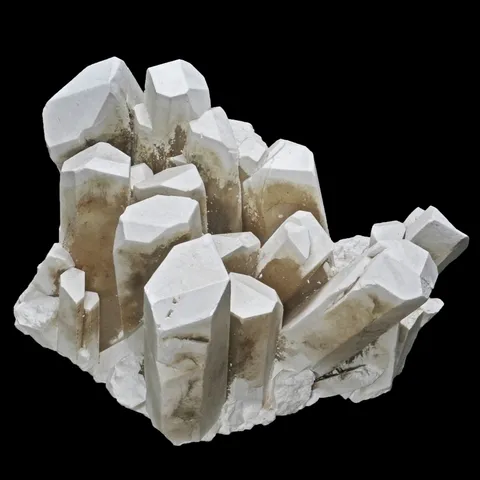BORAX
Class : Carbonates, nitrates, borates
Subclass : Borates
Crystal system : Monoclinic
Chemistry : Na2B4O5(OH)4 8H2O
Rarity : Fairly common
Borax is the most common of the borates. It is, like the majority of borates, an evaporitic mineral formed by evaporation from salt lakes in a desert environment. The waters of these lakes contain large quantities of borated brines linked to volcanic phenomena. This volcanic origin explains why borax is also, more rarely, a fumarolic product. In salt lake deposits, borax is associated with many salts : borates (ulexite, kernite, colemanite...), halite, glauberite, thenardite, gypsum... Its name comes from the Arabic buraq (white), which also designated the saltpetre of the ancient authors. It is a light mineral (density of 1.7), white or slightly tinged with yellowish, greenish, bluish or greyish. The prismatic crystals, short and often flattened, resemble those of augite. Borax is also known in compact masses. The Van der Waals bonds existing in its crystal lattice give it a low hardness (2 to 2.5). Soluble in water, it easily loses five molecules of water to turn into tincalconite : the borax crystals in the collections have thus been covered with a chalky film of this mineral. Borax is the largest source of boron on the planet, mined in the USA, Turkey and the Andean highlands. It is the commercial form of boron, with other borates being converted into borax for sale.
Borax in the World
Twinning
A twin on {100} exists but is rare.
Fakes and scams
No fake inventories for this mineral species.
Hardness : 2 to 2.5
Density : 1.71
Fracture : Conchoidal
Trace : White
TP : Translucent to opaque
RI : 1.447 to 1.472
Birefringence : 0.025
Optical character : Biaxial -
Pleochroism : None
Fluorescence : Blue-green
Solubility : Water
Magnetism : None
Radioactivity : None

